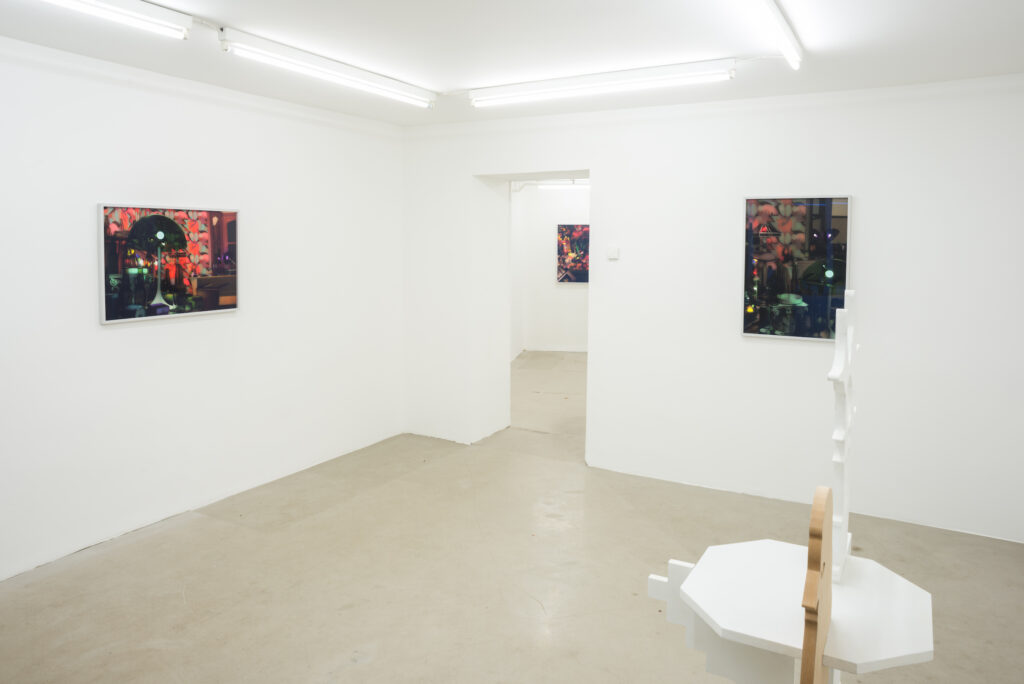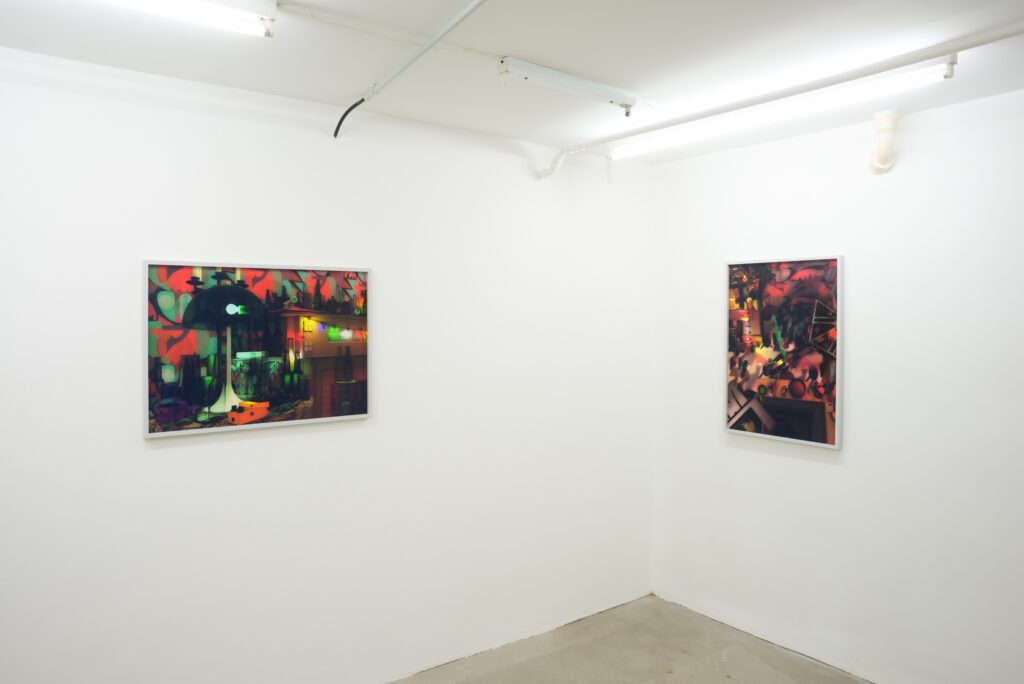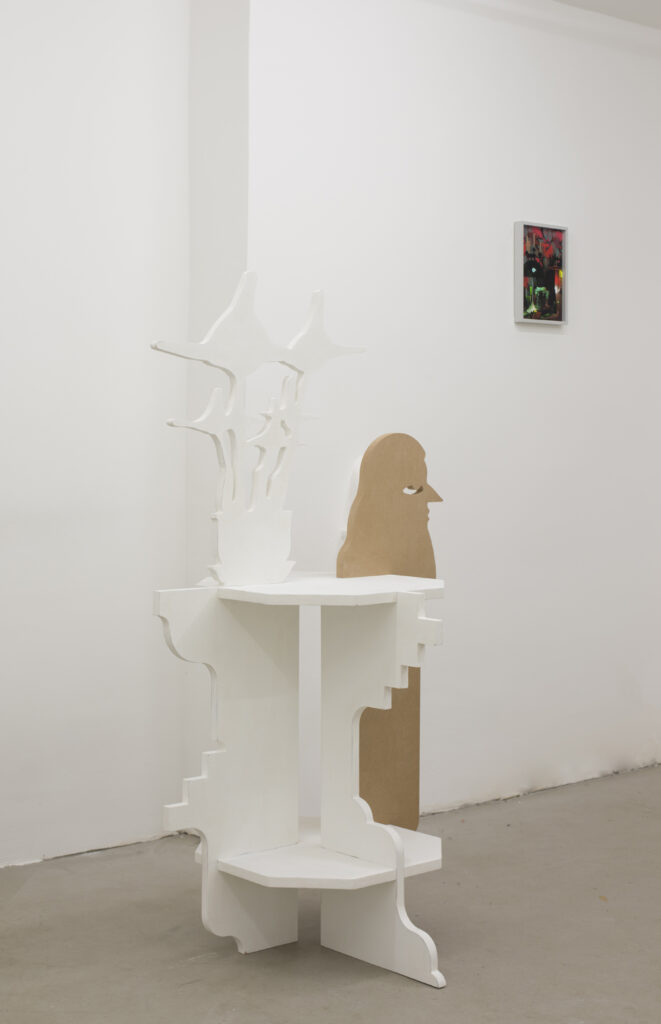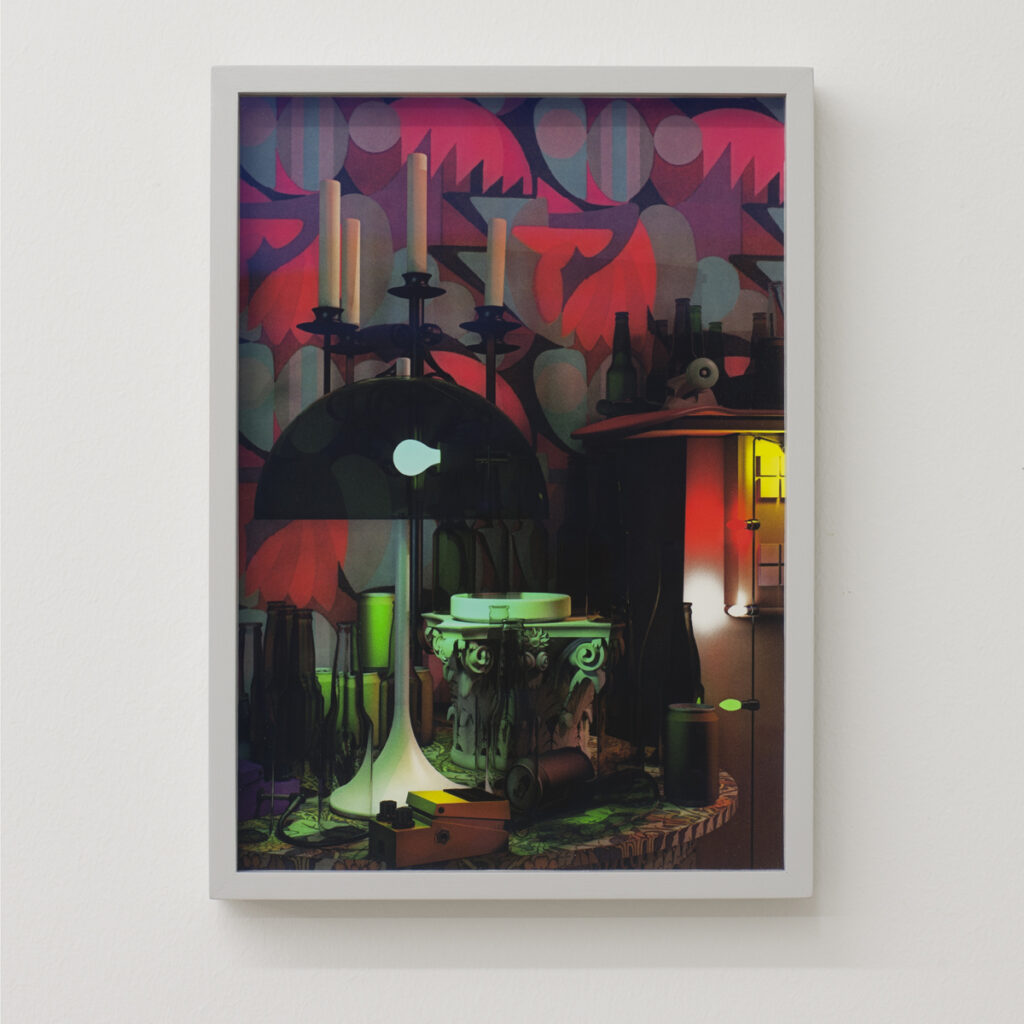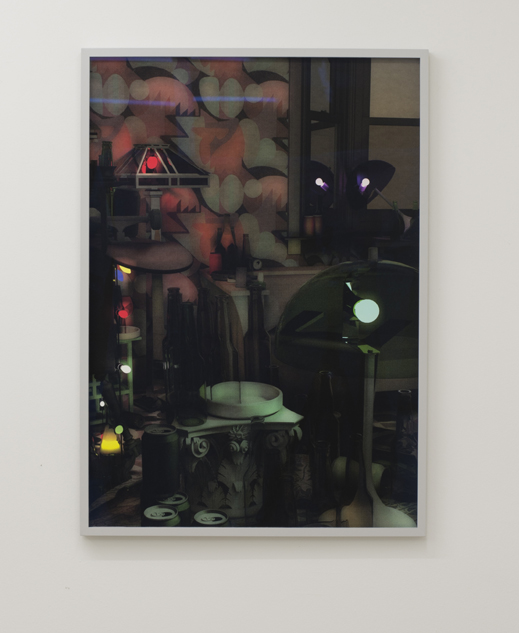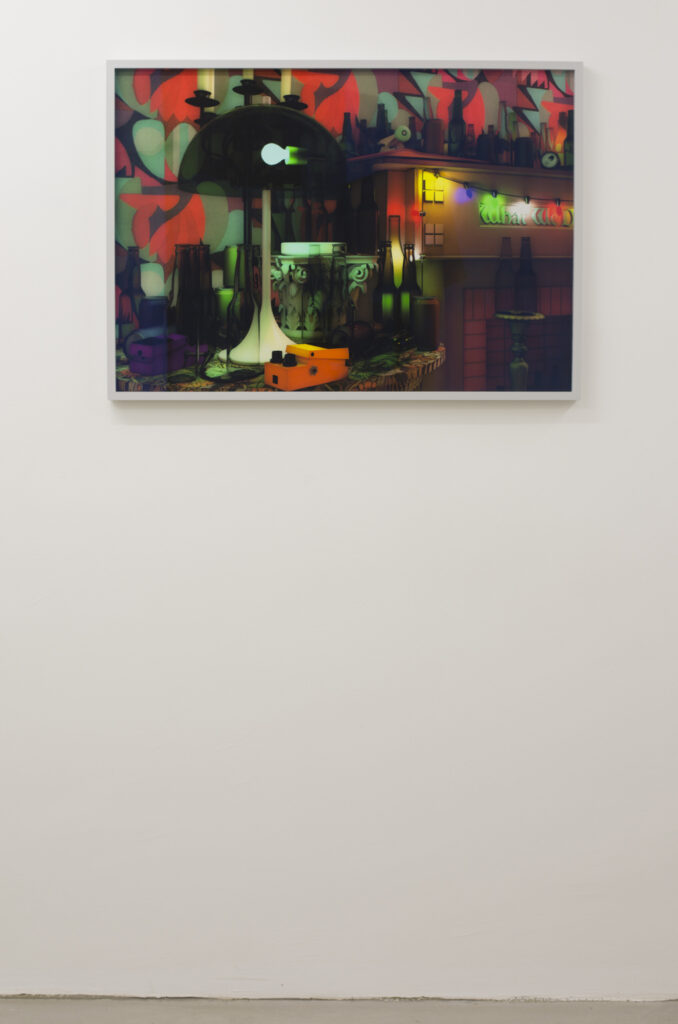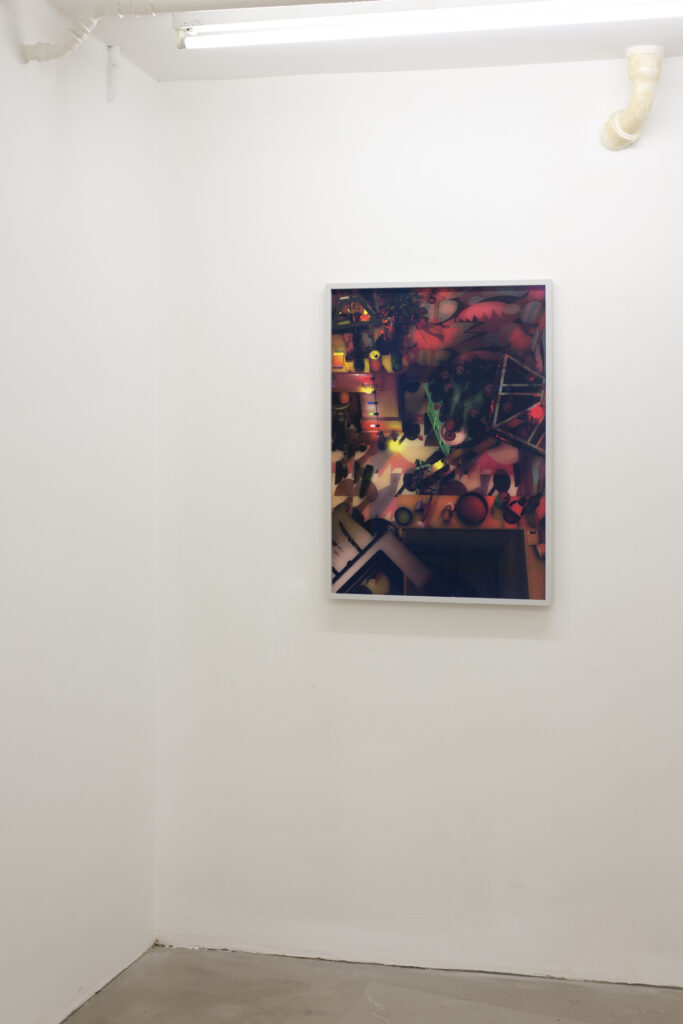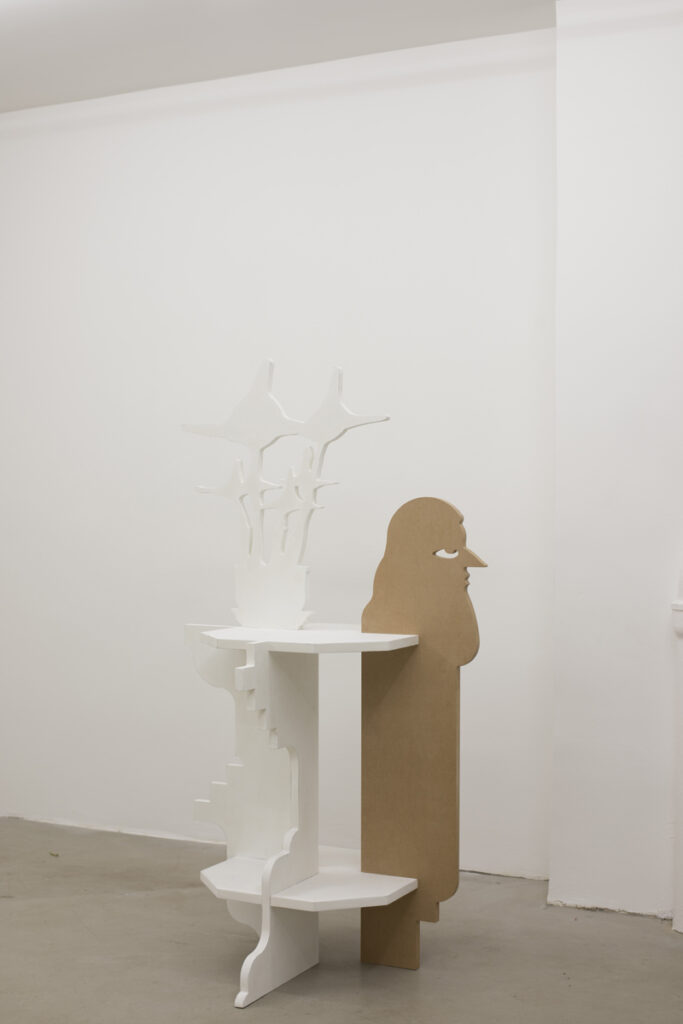What Alex Morrison (*1972 lives and works in Brussels) brought to MÉLANGE is an alienated scenery. In a series of five new works, Morrison sets a stage, which serves to present the idea of a party that could have taken place. Continuing with his latest approach towards image defining means, he uses 3D rendering software to built a highly complex and compelling scene, from which these five prints derive. Morrison´s pieces do not present different interiors, but rather different angles and views from the same virtual room. Thereby the view seems to behave like a tracking shot in a film, guiding the visitor through its space.
Morrison has an affinity towards design and its social influences, inspiring him to referencing architecture and design from different periods. Again, in Thru the Brume (2015) history is playfully intertwined. While the colorful pattern, that decorates the floor and wall originates from French designer Maurice-Pillard Verneuil 1926, the green and purple table lamps allude to the mushroom shaped Gilbert Softlite, which itself reinvents an Italian design from the 1960s. Furthermore an Empire Chair by Robert Venturi (1984), a table by Japonism inspired Charles Rennie Mackintosh are included, mixed with completely self-envisioned furniture. The window frames tell of a possible connection to wooden Victorian era houses, which are characteristic for Vancouver Island where Morrison spent most of his childhood. In between these elaborated fragments of design, a skateboard as well as various distortion pedals are to be found, leading to an interesting assortment of items. These settings in part seem absurd and surreal in the sense of Ducasse Comte de Lautréamont´s aphorism: “The chance meeting of a sewing machine and an umbrella on a dissecting table.” In a similar way the immediate connection between Morrison´s objects remains unknown.
Space, in a political and also in an architectonical sense sets physical and social restrictions, therefore, reactions against these constraints are of Morrisons interest. Through his historic designs references the artist turns them, by the act of collage, into a pile of indifference. The idea of having an outrageous party at a place like seems absurd and contradictory, thus giving it a notion of a rebellion against the imposed authority of the interior that he created.
And just like the famous cynic Diogenes – it is his silouette in the wooden sculpture – who openly revolted against morals and laws of his time. He willingly chose to live in a barrel, leaving all personal possessions behind, giving him the utmost autonomy. In order to maintain personal freedom by removing society’s restrictions, Diogenes in a certain way represents an early culture of subversion, which always comes at a cost.
The exhibition is kindly supported by:
Botschaft von Kanada, Bächer Bergmann
